1. Why water composition matters
Water isn’t just a solvent in espresso—it actively shapes extraction, flavor balance, and machine health. The SCA emphasizes that total dissolved solids (TDS) should lie between 75–250 ppm, optimally around 150 ppm, and that calcium hardness should range from 50–175 ppm (as CaCO₃) with alkalinity of 40–75 ppm and pH 6.5–7.5. SCA’s guideline charts set clear boundaries to strike a balance between flavor extraction and scale prevention .
2. Calcium & Magnesium: The flavor-mineral duo
Flavor extraction
- Magnesium tends to highlight fruity, acidic, delicate notes.
- Calcium enhances creamy, chocolatey, full-bodied qualities.
Scale and machine impact
While magnesium contributes to scale, its compounds (magnesium carbonate/hydroxide) are more soluble at ~100 °C than calcium carbonate, producing less stubborn scale. Calcium carbonate forms hard scale, clogs boilers, insulates heating elements, and disrupts temperature control and pressure regulation .
3. Water hardness: Goldilocks zone
-
- Too soft water (TDS <75 ppm): can lead to under‑extraction—flat, sharp, thin coffee—and corrosion risks due to aggressive water attacking machine metals.
-
- Too hard water (TDS >250 ppm): over‑extraction (bitter, astringent), plus heavy limescale formation.
SCA and other authorities recommend staying between 75–250 ppm TDS and 50–175 ppm total hardness (Ca + Mg), with alkalinity 40–75 ppm, pH 6.5–7.5.
4. Iron: The overlooked risk
Though less common, iron in water—especially from corroded pipes—can pose two threats:
- Aesthetic: rusty-colored scale deposits forming on boiler interiors.
- Chemical: iron ions may catalyze corrosion of steel or copper components.
SCA’s standard underscores that water must be entirely free of iron or other toxic metals. While not typical in municipal supplies, filtered or well water should be tested for iron before use.
5. Preventing and managing scale
Filtration and treatment options
- Ion-exchange softeners: replace Ca/Mg with sodium or potassium. Systems like BWT’s reduce hardness yet maintain flavor by balancing minerals.
- Reverse Osmosis (RO): strips nearly all minerals; must be followed by remineralization to reach optimal SCA parameters.
- Calcium Treatment Units (CTU): remove excess calcium, but may yield uneven results if input water hardness fluctuates.
- Mineral premix water (e.g. Third Wave Water): users add precise minerals to clean water for exact calibration.
Routine machine care
Even with ideal water, regular descaling (every 3–6 months, or sooner in harder‑water areas) is critical for performance and longevity. Use manufacturer‑recommended acids to dissolve scale without harming materials.
6. Summary table
| Factor | Optimal Range | Role |
|---|---|---|
| TDS | 75–250 ppm (ideal ~150 ppm) | Drives extraction, flavor; too low = under‑extraction, too high = over‑extraction |
| Calcium | 50–175 ppm (CaCO₃ eq.) | Adds body and chocolatey flavors; heavy scale risk if excess |
| Magnesium | Subset of total hardness; favor higher Mg/Ca mix | Adds acidity, complexity; scale more soluble than Ca |
| Alkalinity | 40–75 ppm (CaCO₃ eq.) | Buffers acidity and protects against corrosion |
| pH | 6.5–7.5 | Neutral range for flavor and machine health |
| Iron | Zero ppm | Prevents corrosion, staining, and health hazards |
7. Best practices for baristas & home brewers
-
- Test your water: use TDS meters, hardness strips, and check municipal water quality.
-
- Treat water: via softener, CTU, RO + remineralization, or pre‑mixed mineral waters.
-
- Track machine health: inspect steam wands, pipes, thermisters for scale buildup; descale regularly.
-
- Adjust extraction: calibrate dose, grind, and temperature to match your water profile.
Conclusion
Water chemistry profoundly influences both espresso flavor and machine longevity. The essential nutrients—magnesium and calcium—must be present in balanced amounts to achieve full extraction, depth, and clarity. But excessive hardness leads to damaging scale, and corrosive or metallic elements like iron must be completely avoided. SCA guidelines provide a well-defined target zone: 75–250 ppm TDS, 50–175 ppm hardness, 40–75 ppm alkalinity, pH 6.5–7.5, zero iron. By testing water, implementing proper treatment, and committing to consistent maintenance, baristas and home espresso enthusiasts can safeguard their equipment while crafting optimal cups.
-
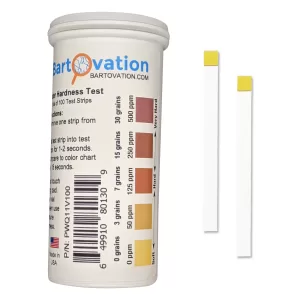
USA Made Total Water Hardness Test Strip Kit 0-500 ppm [100 Strips in Moisture Wicking Bottle]
$16.12 Add to cart -
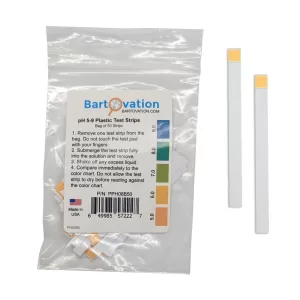
pH 5-9 Test Strips [Bag of 50 Strips]
$8.98 Add to cart -
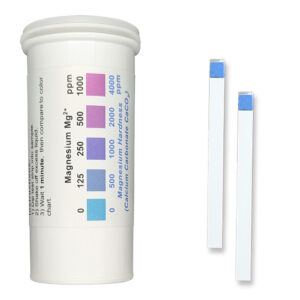
Magnesium Test Strips, 0-1000 ppm [Vial of 25 Strips]
$14.84 Add to cart -
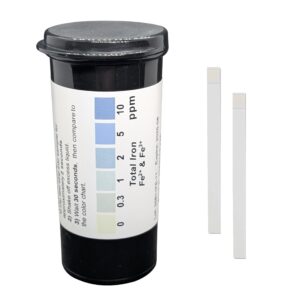
Total Iron Test Strips for Measuring Water, 0-10 ppm [Vial of 25 Strips]
$17.49 Add to cart -
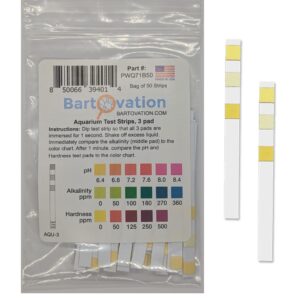
Aquarium Water Test Strips, 3 pad, pH, Alkalinity & Hardness
$13.11 Add to cart
